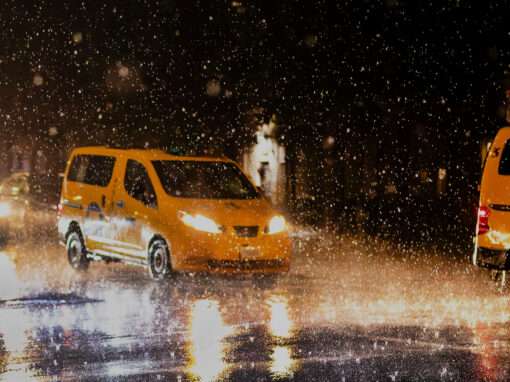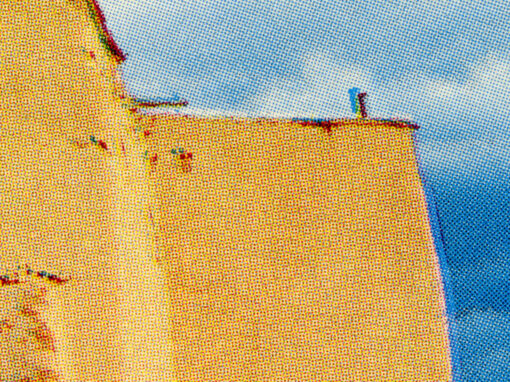The whole idea of communion, of breaking bread together, is deeply rooted in human psychology and history. It doesn’t matter what culture. Eating, second only to breathing for keeping us alive, is an affirmation of community. We make superheroes out of chefs and seek out the trendy, exotic, avantgarde places to go – not only to eat, but to share the experience.
“Dining Alone: In the Company of Solitude” by Nancy A. Scherl
Published by Daylight Community Arts Foundation, 2022
review by W. Scott Olsen
Breaking bread together, in other words, is an affirmation that our lives mean something to somebody else.
So, eating alone is a psychological and social issue as much as a dietary one. When eating alone, we rarely prepare or order an extravagant array. Mac and cheese fulfills the same intestinal purpose as Wagyu Ribeye. This is because there is no other voice or sensibility to share or contradict or confirm our taste. There is no other voice sharing their own story.
We eat alone at home all the time. At work, we often eat alone at our desks. Both situations imply nothing about our lives. But walking into a restaurant alone seems to be a kind of admission of failure. Even on a business trip out of town, something has gone wrong for a person to be eating alone.
Such is the wonderful theme of Dining Alone: In the Company of Solitude by Nancy A. Scherl.
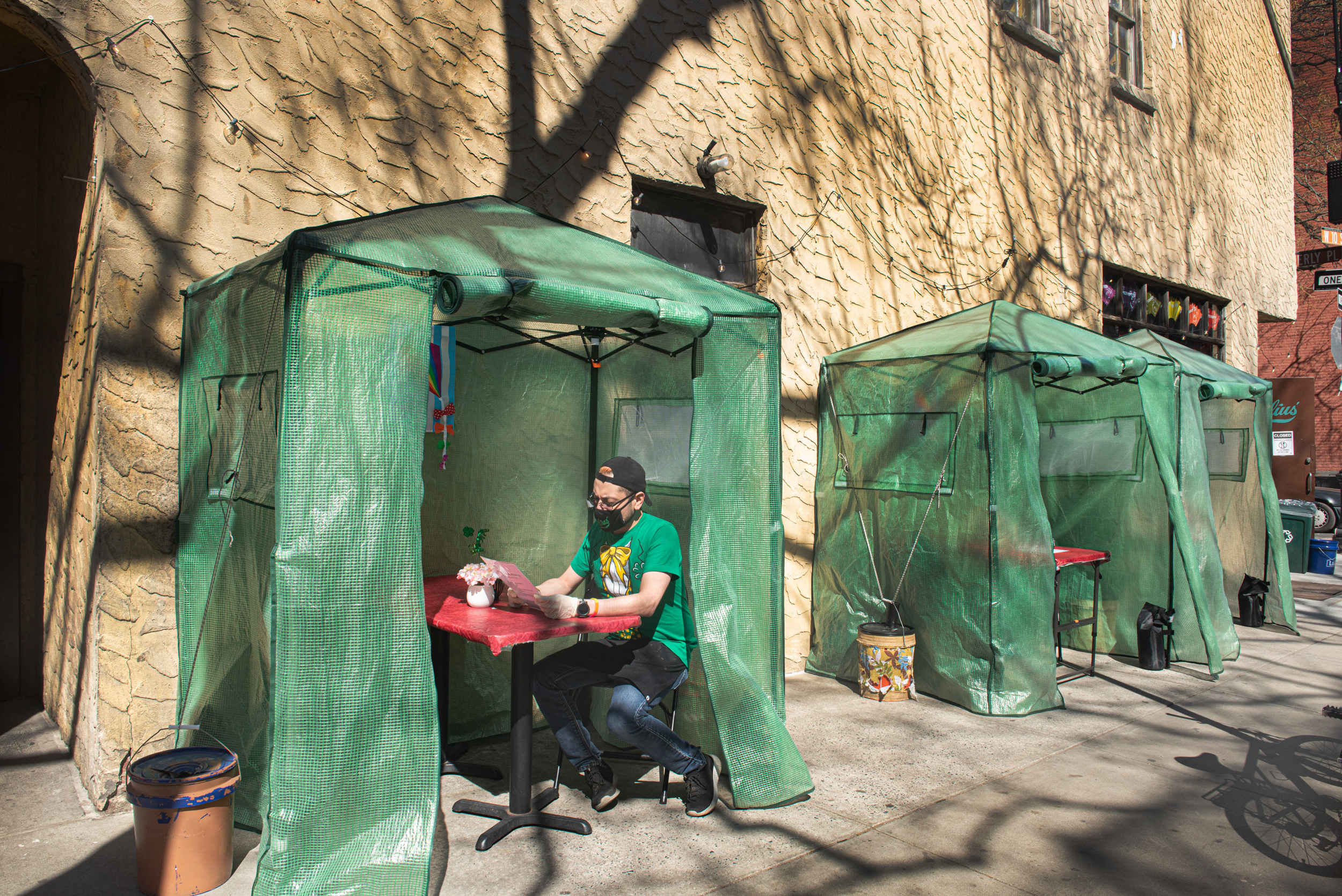
Dining Alone is not a gathering of fine art images. Most of them appear to be serendipitous snapshots, although clearly a couple are posed and staged. But Scherl has been working on this idea, the discomfort people have while eating alone in public, for three decades, and she has developed a fascinating collection.
Each of the images in this book is a situation. And each image is worth lingering over. Who are these people? You can tell an awful lot by the way they are dressed, their general posture, and the look on their faces as they are aware of the fact they are being observed. Eating alone at a restaurant is always a doubled experience. The diner looks out but is also seen. And in that seeing there is judgement. Or better yet, there is the perception of being judged. (Everyone up on their Sartre?) Yes, we say to the world, I am alone. Some of the people seem quite comfortable. Some of the people seem to be posturing.
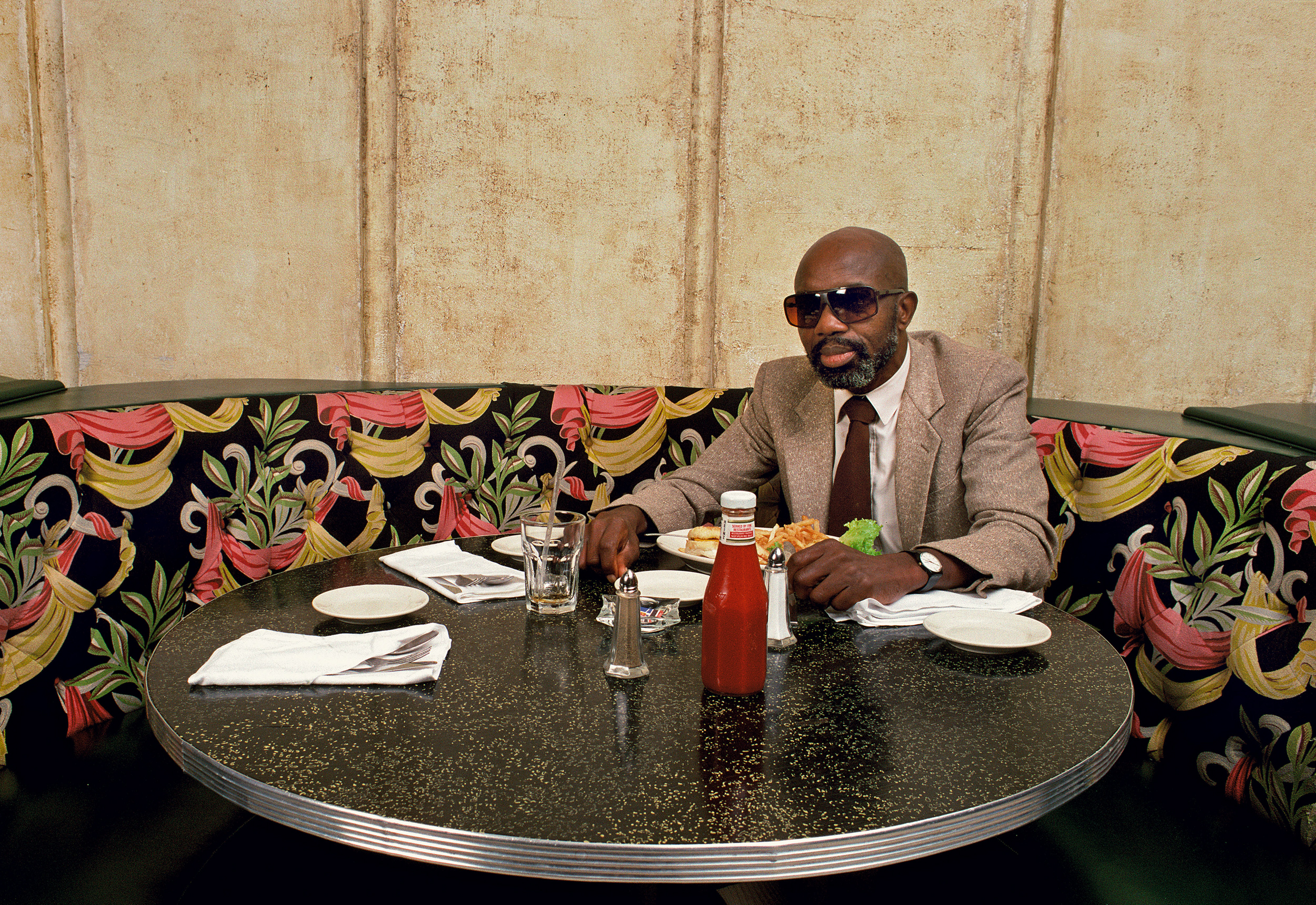
The images in Dining Alone run from cafes and diners to fancy restaurants and sports bars. There are indoor and outdoor images from several places around the world. I’m not sure any of the images in this book are especially poignant, in the fine art sense, but that’s not the point.
This is documentary work. The images range from 1985 to 202 and bring back memories of fashion and restaurant décor as well as changing ideas of social space and seating. Each of these images is revelatory of a particular moment of eating alone. Taken together, the aggregate is a somewhat sad look, I feel, at loneliness.
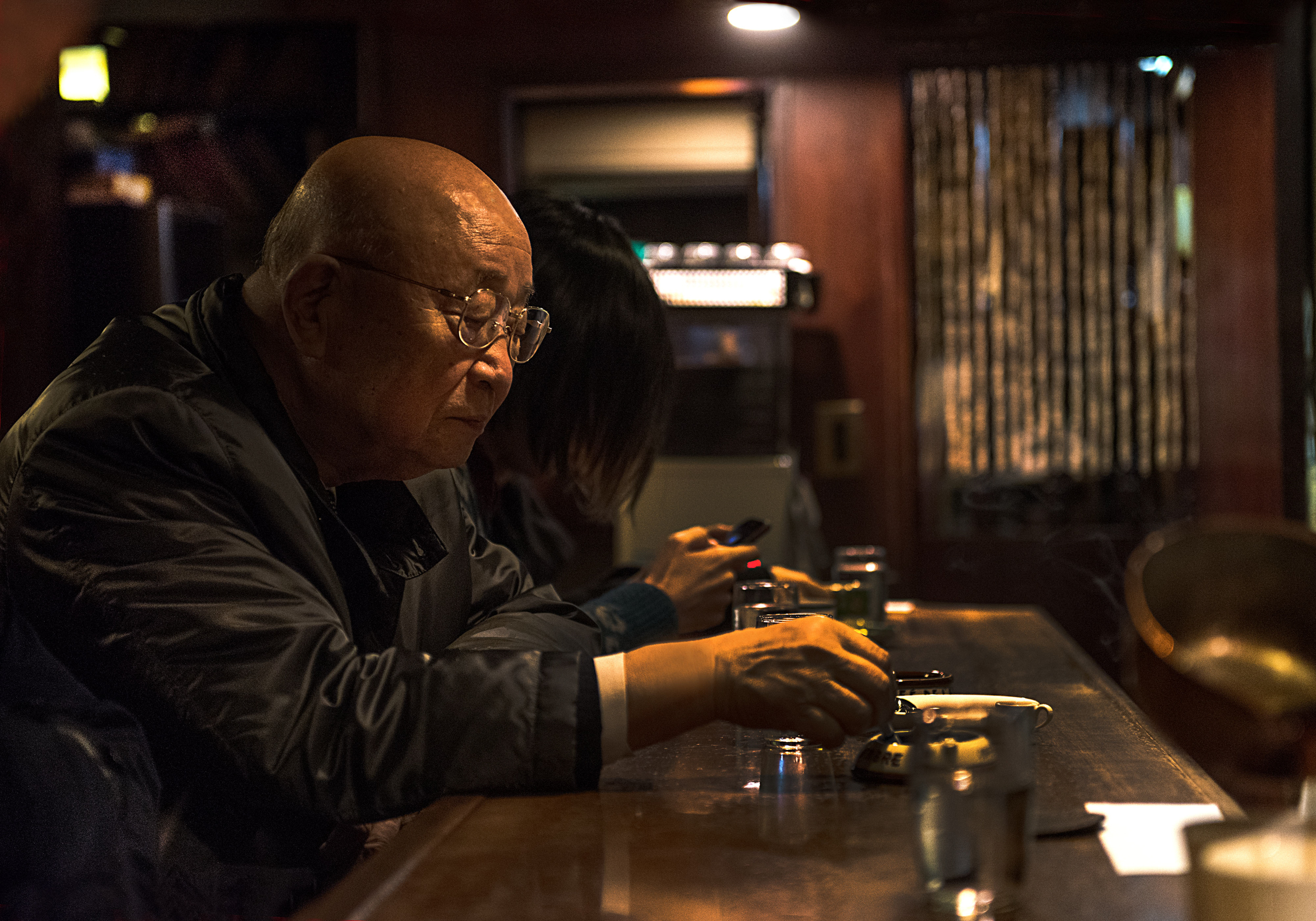
In a Foreword by Laura Wzorek Pressley, Executive Director of CENTER Santa Fe, she writes: “What does it mean to dine alone? What does it mean to dine alone during a pandemic? What is our relationship to solitude in light of technology? Nancy Scherl’s work Dining Alone: In the Company of Solitude invites us to consider these questions. The work spans thirty-five years, ending in 2020, providing a new context for isolation brought on by the global health crisis. The images unfold in a cinema verité style, so the camera is used to unveil truths in a documentary approach. The sixty-five plates are a window into trends of fashion and dining establishments over three decades, reminding us that eating alone still involves being seen.”
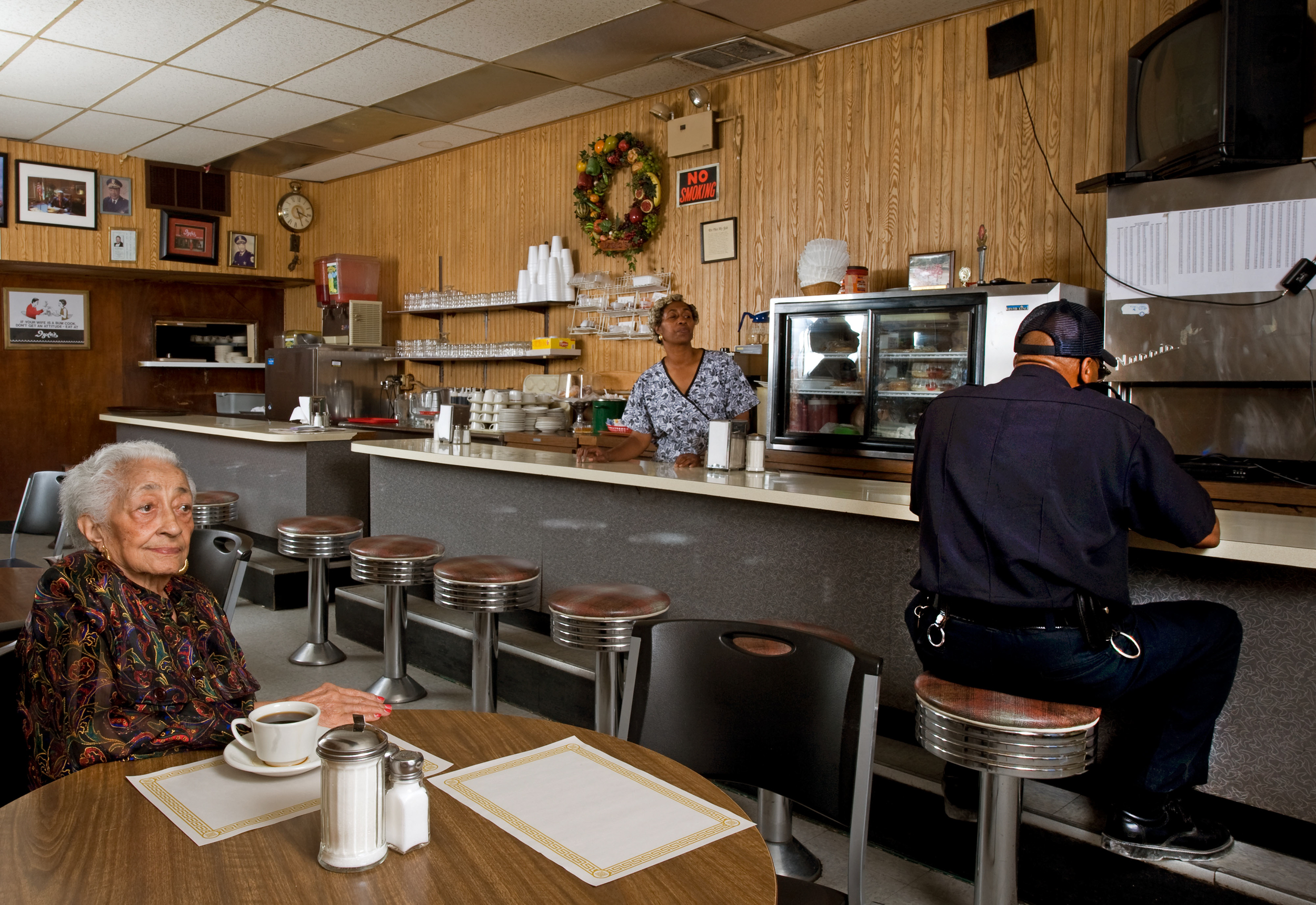
Dining Alone is divided into two parts, each with its own introduction. In part one, Scherl writes: “The imagery in this series suggests that the presence or absence of others, as well as the dining ambiance, may affect the diner’s mood. Lone diners are both observer and observed – how often, and when, does the diner shift between these points of view? The immediacy of being alone in public creates a natural dynamic contrast between the basic human need to connect and the necessity of confronting oneself as alone in life, in at least that moment. Dining alone for a woman or man is likely a meaningfully different reality. Age, race, culture, the country where one is dining, and one’s personal life circumstances necessarily have a bearing on the quality of experience when dining alone… When does being alone in any environment become the estrangement of anonymity or feeling lonely, and when is being alone solitude, bringing pleasure or the fullness of joy?”
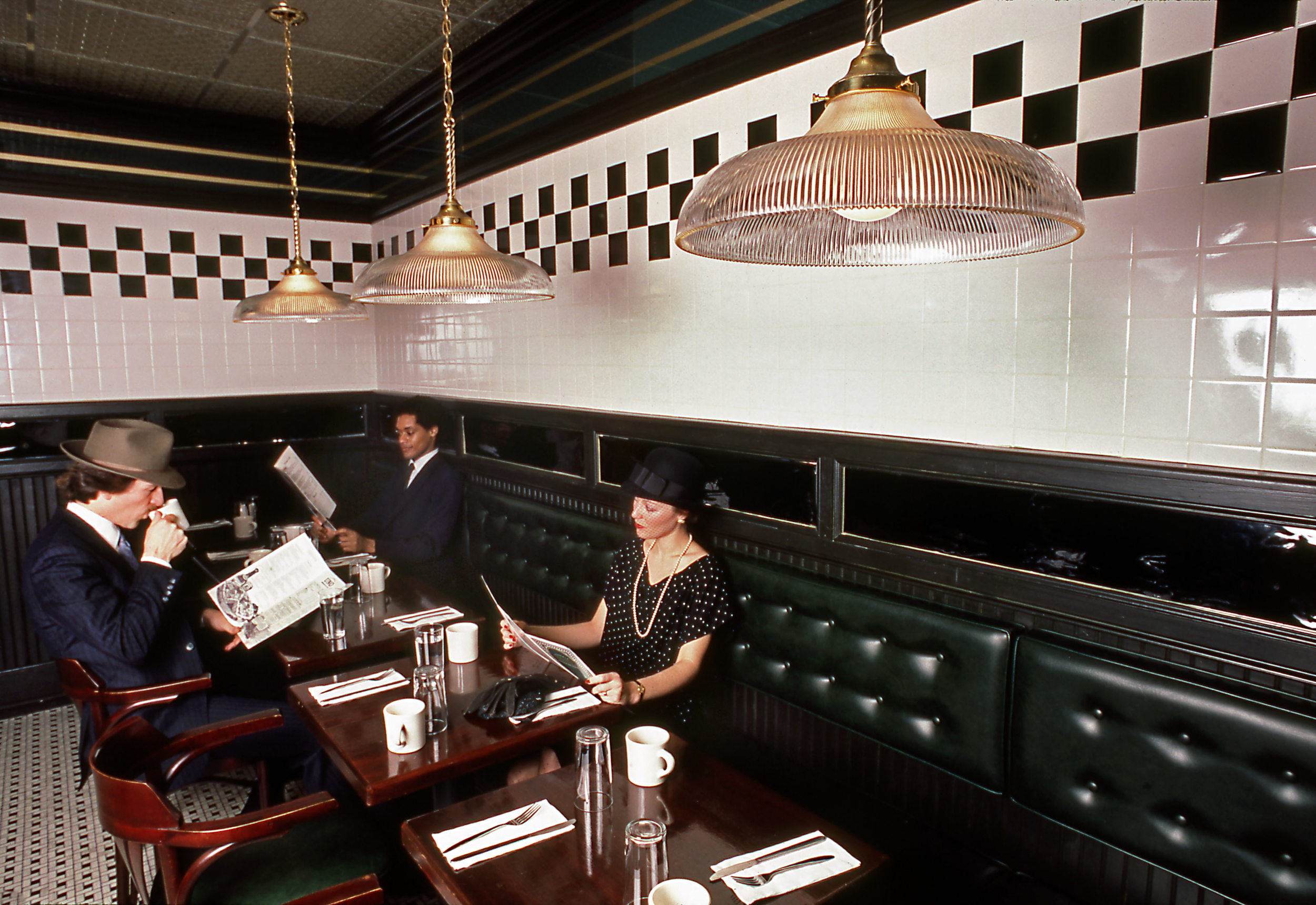
In Part One, titled “Universal and Timeless,” the images reveal men and women eating alone, many of them reading newspapers or books, but most of them actually looking outward, scanning the room they’re in or the sidewalk they are near. There is, in each of them, an active wish for community, acknowledgement, communion, pick your word. Some of the men and women look at other tables, some of them simply look into the distance beyond the camera’s frame. In only a few, however, do people seem to actually acknowledge other people in the image.
Part Two, titled “Universal and Timely,” takes up the urgency of the COVID-19 pandemic. Few industries were more affected by the pandemic than the restaurant industry, when the whole notion of going out into public, whether alone or not, could be hazardous. Scherl writes: “Yet despite all the challenges and sorrows of isolation and being alone, from an existential point of view this pandemic has provided a definite and also universal life-changing perspective. While aloneness is built into human life – at least the moments just before birth and as we die – the pandemic poignantly reminds us of our mortality and that the fragilities of life do not discriminate. We are perhaps paradoxically reminded that even our in our aloneness, we are very much connected with each other exactly because of our very existence and vulnerabilities.”
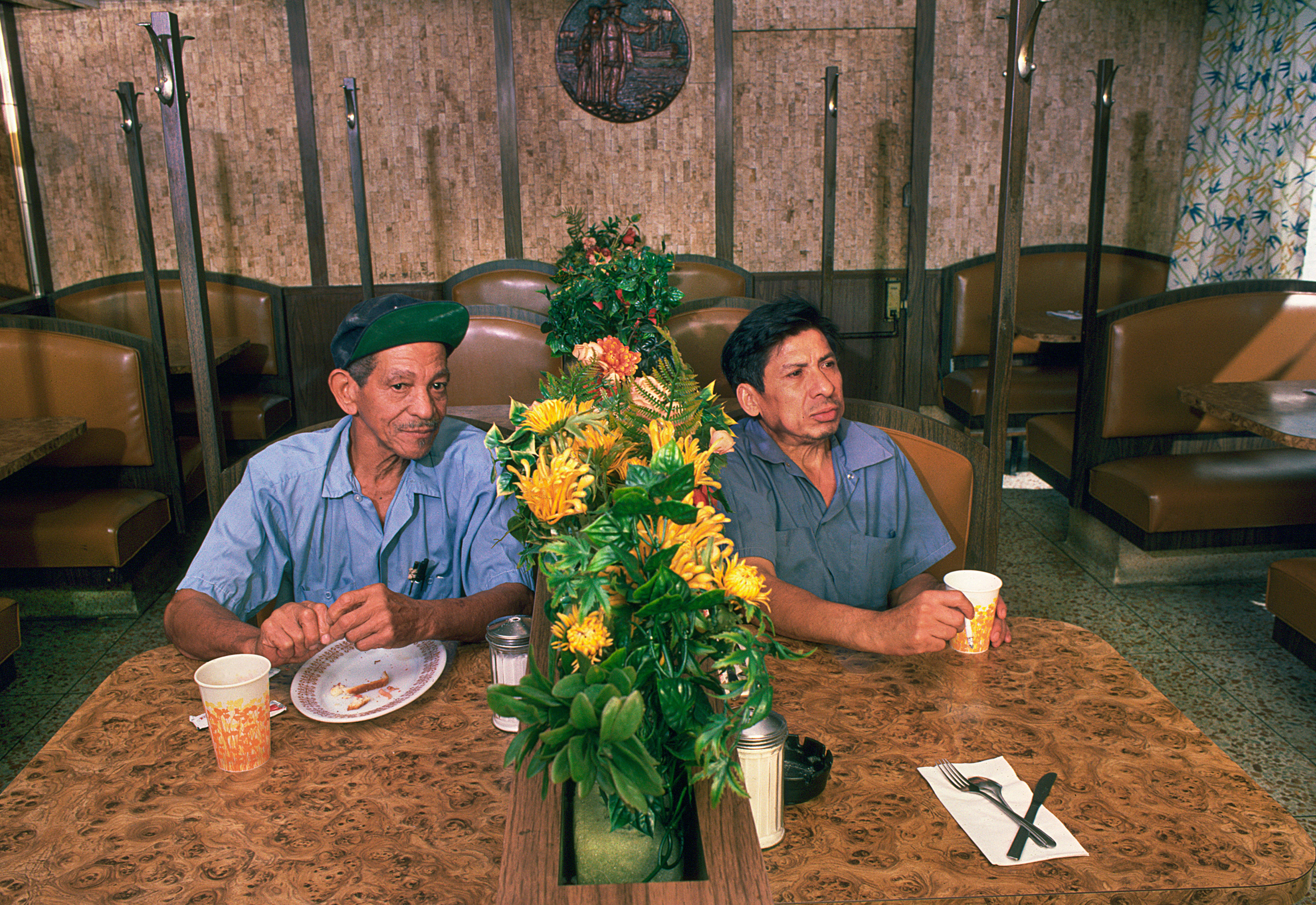
In Part Two, by virtue of being more recent, the styles and clothing and decorations seem current and normal. The situations, though, are just as they were in Part One: people eating alone. But here the aloneness is less a matter of choice or circumstance and more a matter of force or law. The distance between people is regulation. Some people sit in tents of various designs; some people sit alone in an entire dining room. Masks, worn if not on a person’s face then tucked neatly under the chin to allow for food, are present in nearly every image.
One substantial difference in Part Two is that nearly everybody is engaged with an electronic device. In Part One, people look up and out for the Other. In Part Two, they look down. Down to the device and then out into the universe, seeking that connection with others.
And while it might be simply the happenstance of photographic opportunity, the meals throughout this book often don’t exist at all.
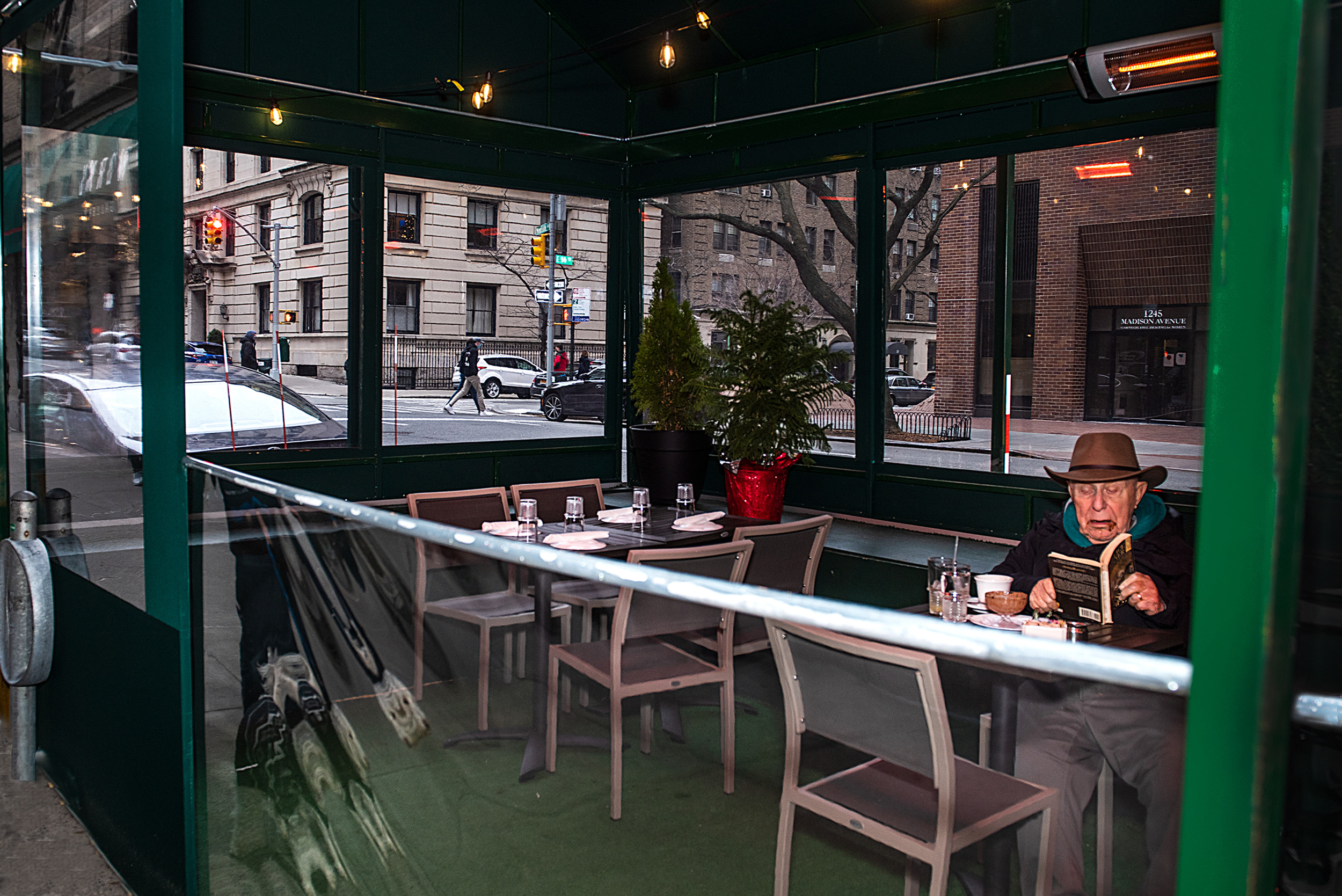
One particular image, however, struck me. In the last image before the Afterword, a woman sits in a corner table in a restaurant behind several sheets of plexiglass brought on by COVID-19 protections. A security camera above her head observes her, as we observe her from other side of the room. She has a glass of water and a glass of wine. A shopping bag fills the seat opposite her. With both hands she holds a cell phone to talk to the outside world. There are no servers, nobody visible at other tables. She is alone physically, though perhaps not alone via cell phone, protected from others and as they are protected from her, observed by those of us looking at the book, by Scherl in the act of photographing, by the security camera, and the glass of wine is almost empty.
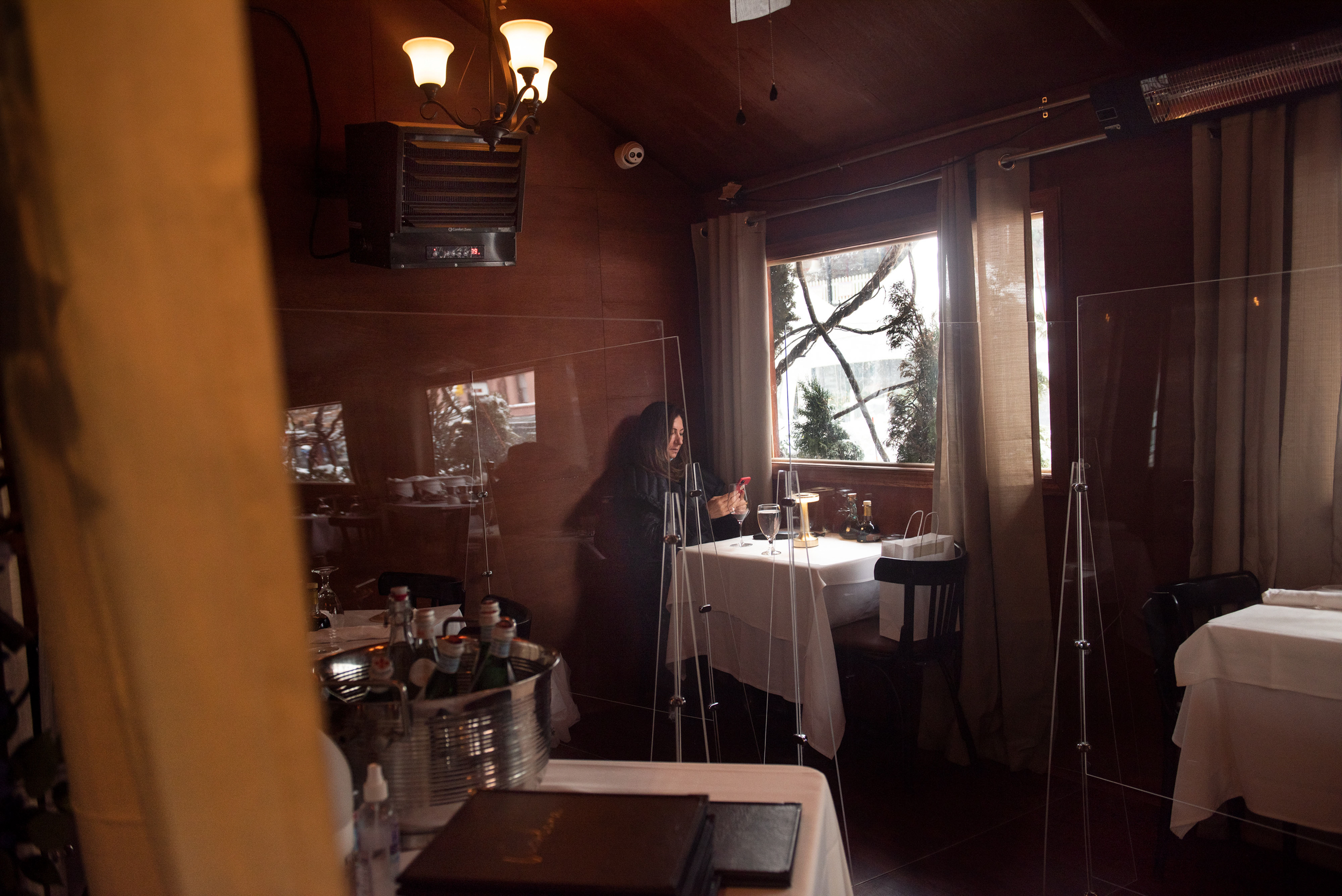
In the Afterword, Scherl writes: “When we dine alone in public, we are observers, and we are observed. We project our own psyches onto strangers we see in public, but we cannot presume to know with accuracy what they think or what their circumstances are. We cannot easily determine whether those review for a few moments are, in fact, lonely or at peace in their solitude, whether the person is bound in their aloneness or set free.”
It’s pleasant to note, at the very end of the book, Scherl has a self-portrait with her mother, both of them sitting at a small restaurant table, holding hands. And while it may be an accident, it’s poignant to note that Scherl’s mother has a place setting, plates in front of her, and Scherl does not. In the image, Scherl has joined her mother, who is dining alone.
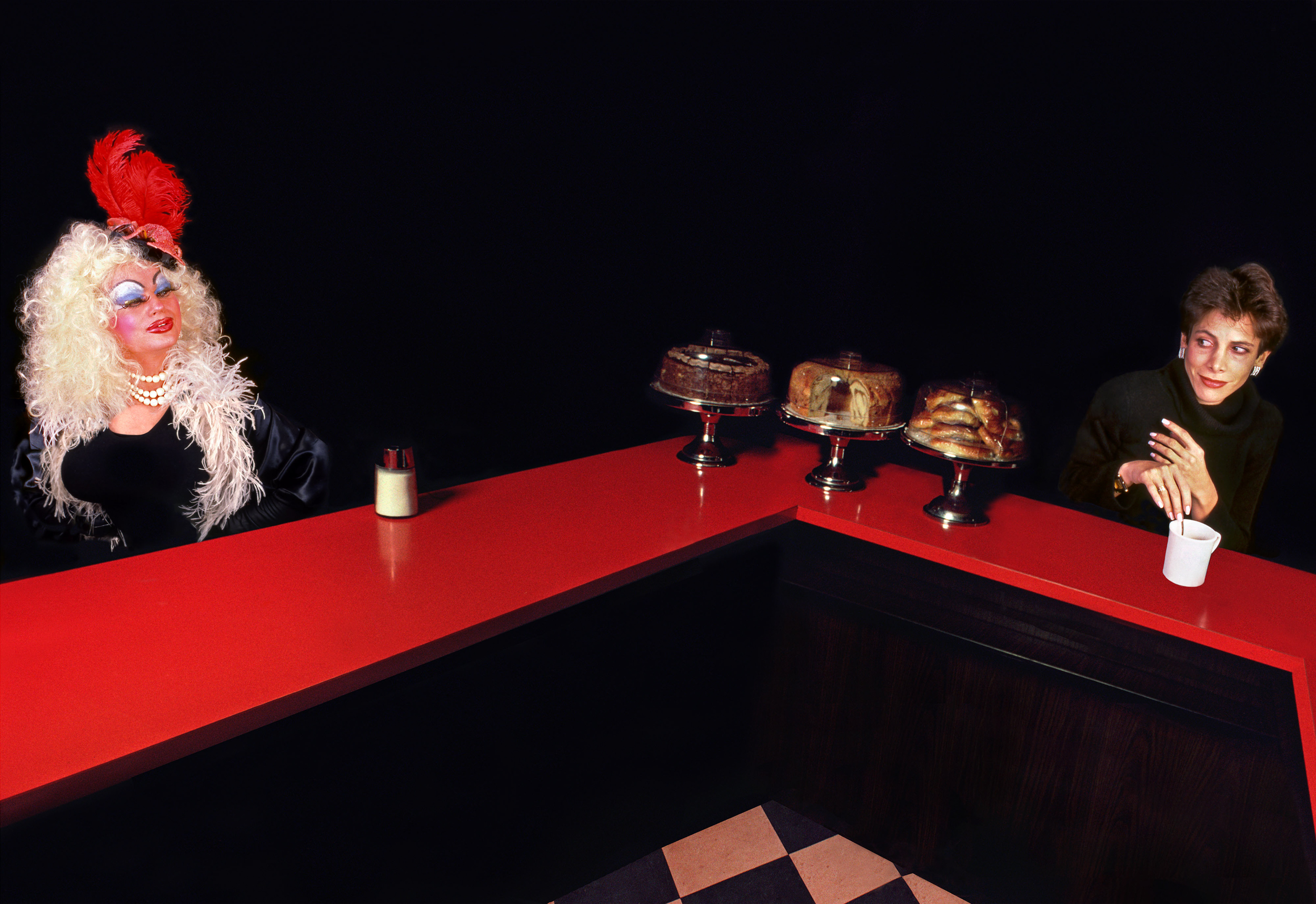
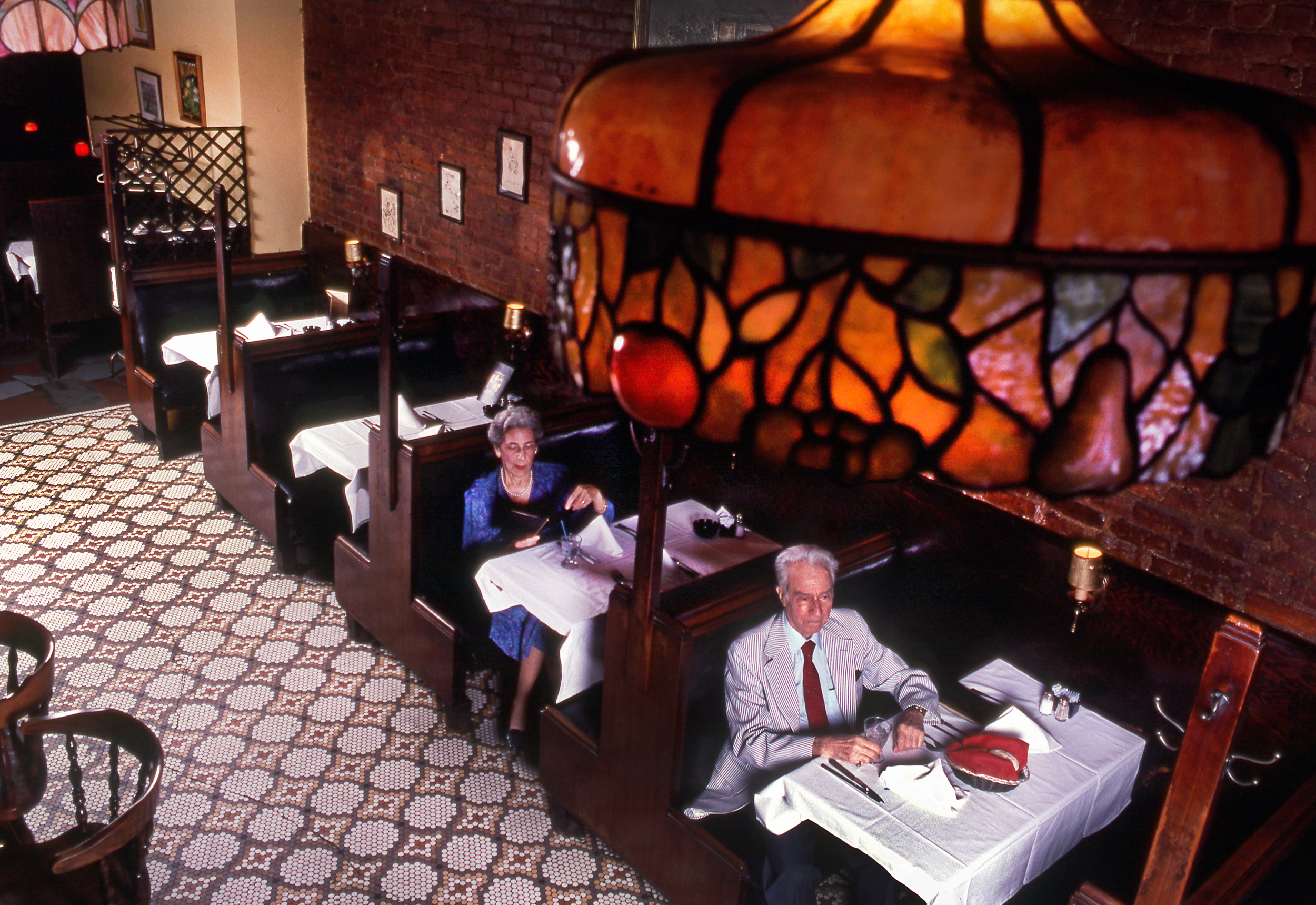
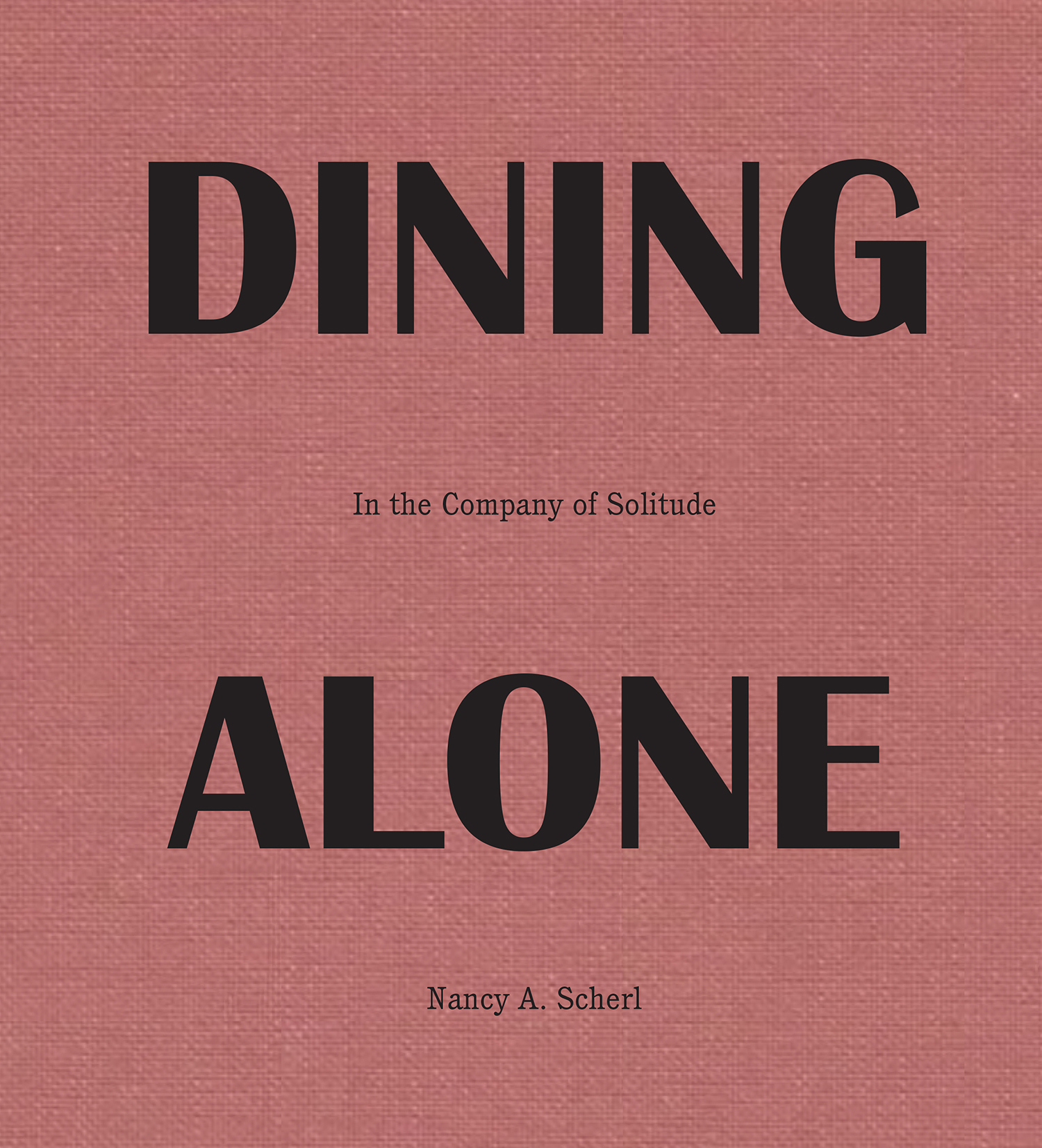
A note from FRAMES: if you have a forthcoming or recently published book of photography, please let us know.



